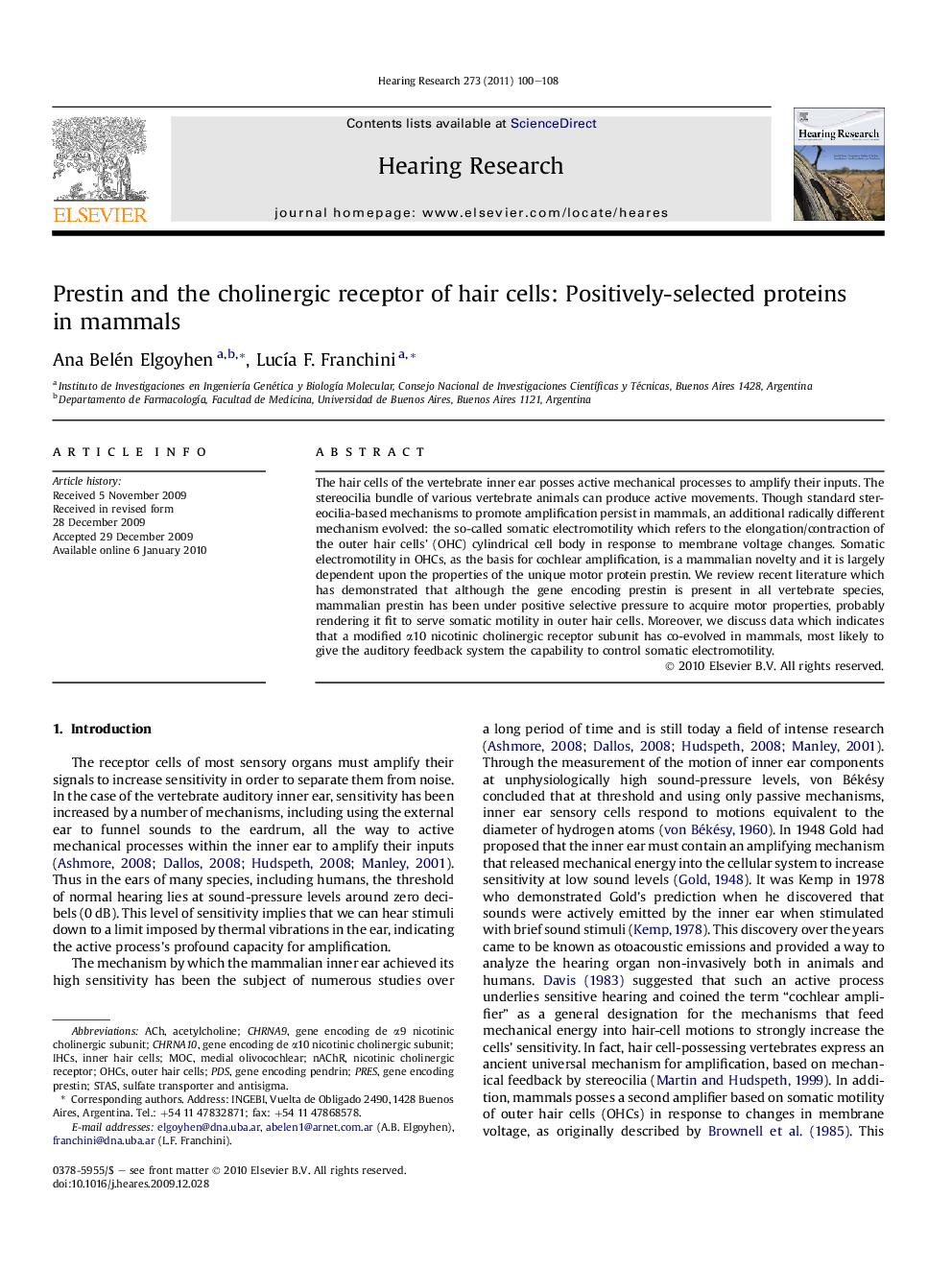| Article ID | Journal | Published Year | Pages | File Type |
|---|---|---|---|---|
| 4355486 | Hearing Research | 2011 | 9 Pages |
The hair cells of the vertebrate inner ear posses active mechanical processes to amplify their inputs. The stereocilia bundle of various vertebrate animals can produce active movements. Though standard stereocilia-based mechanisms to promote amplification persist in mammals, an additional radically different mechanism evolved: the so-called somatic electromotility which refers to the elongation/contraction of the outer hair cells’ (OHC) cylindrical cell body in response to membrane voltage changes. Somatic electromotility in OHCs, as the basis for cochlear amplification, is a mammalian novelty and it is largely dependent upon the properties of the unique motor protein prestin. We review recent literature which has demonstrated that although the gene encoding prestin is present in all vertebrate species, mammalian prestin has been under positive selective pressure to acquire motor properties, probably rendering it fit to serve somatic motility in outer hair cells. Moreover, we discuss data which indicates that a modified α10 nicotinic cholinergic receptor subunit has co-evolved in mammals, most likely to give the auditory feedback system the capability to control somatic electromotility.
